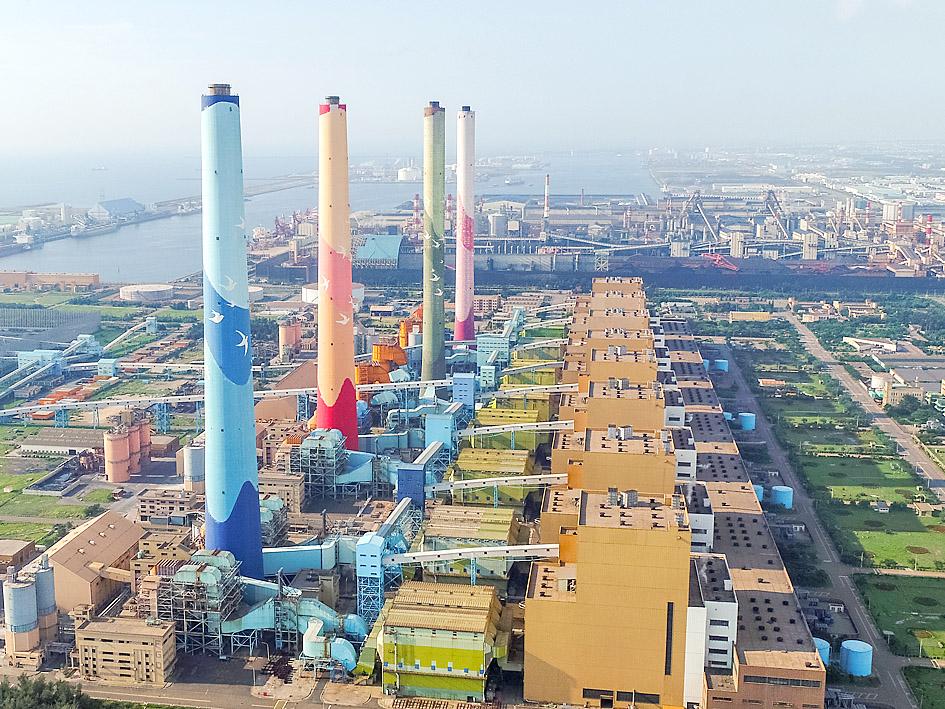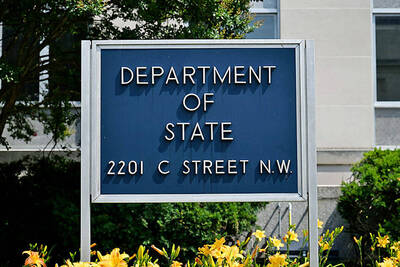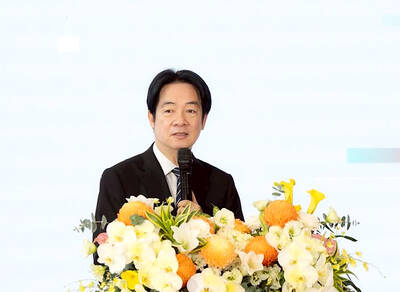The Legislative Yuan yesterday passed a resolution proposed by the Democratic Progressive Party (DPP) to decommission Taichung Power Plant’s coal-fired generators by 2035, and to preserve the generators as a national security emergency reserve.
Taiwan Power Co (Taipower, 台電) had said that it would decommission the plant’s 10 coal-fired subcritical steam generators by 2046.
The resolution, which was introduced by Deputy Legislative Speaker Tsai Chi-chang (蔡其昌) of the DPP, cleared the legislative floor with a vote of 68 to zero.

Photo courtesy of the Taichung City Government
The DPP’s version asks the government to keep construction of the plant’s natural gas-fired No. 1 and No. 2 units on schedule, and to accelerate construction of the No. 3 and No. 4 units.
The natural gas units would take over from their coal-fired counterparts one at a time after two years of continuous, normal operation.
The coal-fired boilers would be decommissioned and put in reserve, not scrapped.

Photo: Chen Yu-fu, Taipei Times
The DPP version prevailed over proposals by the Chinese Nationalist Party (KMT) and the New Power Party (NPP), which were voted down largely along party lines.
The KMT proposal asked the government to decommission two coal-fired units at a time, with the first wave of decommissioning beginning before construction of the gas-fired units would have been approved.
The KMT caucus, which abstained from voting on the DPP plan, chanted “too slow” as their DPP colleagues cast their ballots.
KMT Chairman Johnny Chiang (江啟臣), who cosponsored the draft, credited his party for pushing the DPP into retiring coal-fired generators earlier than the government had planned.
“Still, the resolution to decommission instead of scrapping raises doubts that [the DPP] might be putting on a performance” for Taichung voters, Chiang said.
Clean Air Taichung spokeswoman Shih Yu-ching (石毓菁) urged Taichung Mayor Lu Shiow-yen (盧秀燕) to not delay the DPP plan, which promises to deliver gas turbines on an accelerated timetable.
However, the DPP plan is “indeed too slow” over decommissioning the coal-fired units, which Taipower is to terminate before 2030, Shih said.
The legislature also passed a resolution ordering the Ministry of the Interior to evaluate whether the national emblem bears an inappropriate resemblance to the KMT’s emblem.
The ministry is to present a report to the legislature in two months from today.
The emblem resolution, which was proposed by the NPP, cleared the legislative floor 63 to 37.
The DPP and NPP lawmakers voted in favor, the KMT legislators voted against and the Taiwan People’s Party’s five lawmakers abstained.
The resolution states that the government must provide a clear rationale to justify the similarity of the national emblem and the KMT emblem, which “causes confusion and is inappropriate” for a democratic country.
“The KMT emblem represents only the will of a part of the people,” NPP Legislator Chiu Hsien-chih (邱顯智) said.
“The similarity of the national emblem to the party emblem suggests a lack of separation between state and party. This should not be allowed in Taiwan today,” Chiu said.
KMT Culture and Communications Committee deputy chairman Cheng Chao-hsin (鄭照新) said that people had never been confused about the state and party emblems.
“The public do not care about this issue in the middle of the COVID-19 pandemic,” Cheng said.
Additional reporting by Tsai Shu-yuan and CNA

MISINFORMATION: The generated content tends to adopt China’s official stance, such as ‘Taiwan is currently governed by the Chinese central government,’ the NSB said Five China-developed artificial intelligence (AI) language models exhibit cybersecurity risks and content biases, an inspection conducted by the National Security Bureau (NSB) showed. The five AI tools are: DeepSeek, Doubao (豆包), Yiyan (文心一言), Tongyi (通義千問) and Yuanbao (騰訊元寶), the bureau said, advising people to remain vigilant to protect personal data privacy and corporate business secrets. The NSB said it, in accordance with the National Intelligence Services Act (國家情報工作法), has reviewed international cybersecurity reports and intelligence, and coordinated with the Ministry of Justice Investigation Bureau and the National Police Agency’s Criminal Investigation Bureau to conduct an inspection of China-made AI language

BOOST IN CONFIDENCE: The sale sends a clear message of support for Taiwan and dispels rumors that US President Donald Trump ‘sold out’ the nation, an expert said The US government on Thursday announced a possible sale to Taiwan of fighter jet parts, which was estimated to cost about US$330 million, in a move that an expert said “sends a clear message of support for Taiwan” amid fears that Washington might be wavering in its attitude toward Taipei. It was the first announcement of an arms sale to Taiwan since US President Donald Trump returned to the White House earlier this year. The proposed package includes non-standard components, spare and repair parts, consumables and accessories, as well repair and return support for the F-16, C-130 and Indigenous Defense Fighter aircraft,

CHECKING BOUNDARIES: China wants to disrupt solidarity among democracies and test their red lines, but it is instead pushing nations to become more united, an expert said The US Department of State on Friday expressed deep concern over a Chinese public security agency’s investigation into Legislator Puma Shen (沈伯洋) for “secession.” “China’s actions threaten free speech and erode norms that have underpinned the cross-strait ‘status quo’ for decades,” a US Department of State spokesperson said. The Chongqing Municipal Public Security Bureau late last month listed Shen as “wanted” and launched an investigation into alleged “secession-related” criminal activities, including his founding of the Kuma Academy, a civil defense organization that prepares people for an invasion by China. The spokesperson said that the US was “deeply concerned” about the bureau investigating Shen

‘TROUBLEMAKER’: Most countries believe that it is China — rather than Taiwan — that is undermining regional peace and stability with its coercive tactics, the president said China should restrain itself and refrain from being a troublemaker that sabotages peace and stability in the Indo-Pacific region, President William Lai (賴清德) said yesterday. Lai made the remarks after China Coast Guard vessels sailed into disputed waters off the Senkaku Islands — known as the Diaoyutai Islands (釣魚台) in Taiwan — following a remark Japanese Prime Minister Sanae Takaichi made regarding Taiwan. Takaichi during a parliamentary session on Nov. 7 said that a “Taiwan contingency” involving a Chinese naval blockade could qualify as a “survival-threatening situation” for Japan, and trigger Tokyo’s deployment of its military for defense. Asked about the escalating tensions